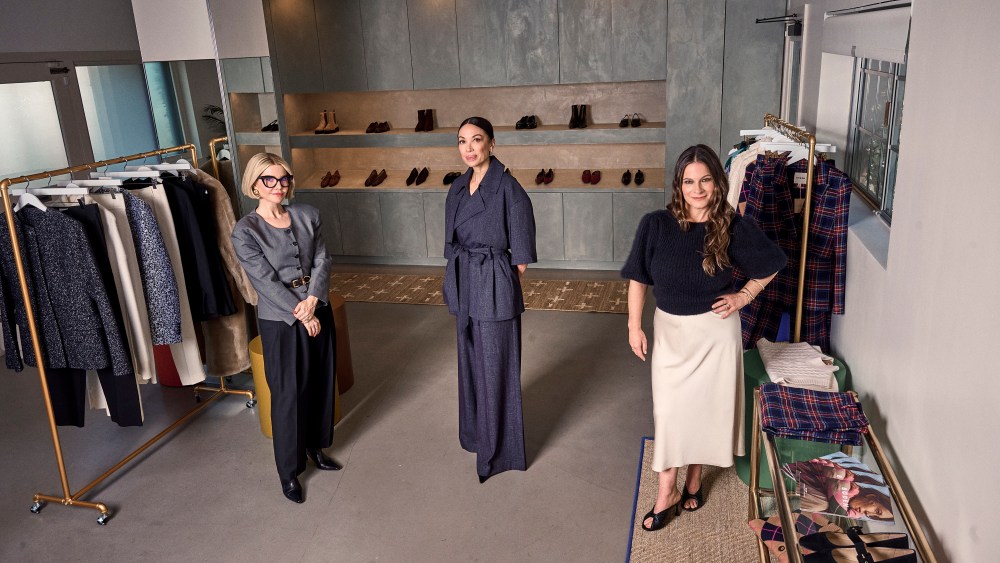At Vince, the fashion is understated but efforts at streamlining, strengthening the balance sheet, and sharpening the focus are anything but.
In the latest development, Vince on Wednesday revealed that John Szczepanski, who has 20 years’ experience in corporate finance and supply chain leadership roles, most recently as Ralph Lauren’s chief financial officer for global supply chain, brands and Lifestyle Group, will join the company as chief financial officer on Jan. 2. He succeeds Michael Hand, the interim CFO, who will remain with Vince for a transition period in a consulting, non-executive capacity. Hand stepped up to the CFO role after Amy Levy left the company in June.
“John is an industry veteran and a longtime Ralph Lauren executive where he wore a couple of hats. He’s got expertise, not just in public reporting and being a CFO, but also in supply chain,” Jack Schwefel, chief executive officer of Vince Holding Corp., told WWD.
“We’ve got very big plans, whether we’re talking about a men’s expansion or international retail expansion. John will be a great partner as we start to march forward on this,” Schwefel added. “He’ll be a tremendous asset to the team…as we continue to progress our transformation program and position Vince for long-term success.”
In other maneuvers helping Vince navigate the challenging macroeconomy, a program to reduce costs by $30 million over three years was recently implemented, involving streamlining manufacturing and production operations, reducing promotional activity, and other efficiencies. A new five-year credit agreement for an $85 million senior secured asset-based revolving credit facility was signed, replacing the old credit facility and increasing financial flexibility, and the company phased out its Rebecca Taylor business so the team could concentrate on the Vince contemporary brand.
In another maneuver, Vince last spring inked a deal to transfer its intellectual property to a newly-formed subsidiary of Authentic Brands Group, called ABG Vince, in return for $76.5 million in cash and a 25 percent membership interest in the subsidiary. It was dubbed “a transformative strategic partnership.”
In its second quarter, Vince reported net sales of $69.4 million and net income at $29.5 million, or $2.36 per diluted share. In 2022, total sales were $357.4 million, gross profit was $138 million, and there was a net loss of $38.3 million, or $3.14 per share.
In the following Q&A, Schwefel further explains the financial arrangement behind the ABG Vince partnership, how they work together, and other strategies.

WWD: Describe the terms of the subsidiary agreement.
Jack Schwefel: We have eight consecutive 10-year contracts, basically an 80-year evergreen deal to make all Vince apparel. We own those categories. As it’s always been prior to this partnership, we still design, produce, ship and sell all of the Vince apparel products. ABG has the ability to assign a license for a non-core category, such as eyewear or fragrance. Vince Holding pays ABG Vince royalty payments since Vince gets use of the IP to sell and manufacture the core Vince categories and ABG Vince, which owns 75 percent of the Vince IP, pays Vince Holding a cash distribution equal to 25 percent of ABG Vince’s net cash received from other licensed categories.
WWD: Does owning 75 percent of the IP mean that the subsidiary is a part owner of Vince in some way or that Authentic is a partner with Vince?
J.S.: We’re partners. ABG owns zero percent of Vince Holding Corp. We are still as we were — a publicly traded company. This wasn’t an outright sale, it was only an IP sale. So it’s a little different if you look across the ABG universe. ABG owns 45 plus brands now.
WWD: How do Vince and Authentic collaborate through this new subsidiary?
J.S.: At this point, we meet about once a quarter, and we show them where we are in design and the design phase, which is typically eight to 10 months out. We chat about where we are going (with design) because they need that information as they pivot to anyone who’s got a license for our brand, to make sure that what a licensee is doing, which (currently) means shoes and soft accessories, is relevant to what we are doing with all the apparel. Starting next fall, that will also mean men’s tailored clothing with Peerless, which will do a line of Vince men’s tailor clothing — suiting and things to go to with that. They will sell that to department stores and we will consider buying that for our website and probably for a couple of select stores, certainly not in southern California, but it might be for our store on Newbury Street (Boston) and on Oak Street, which is next to Michigan Avenue in Chicago. Space is always a limitation in our stores, which aren’t that big, but we will clearly play with them (on tailored clothing). We looked to do tailored ourselves (with Peerless) so when Peerless stepped forward to ABG we were more than OK with it. They know each other. Peerless has done work for ABG with its Hart Schaffner Marks and Hickey Freeman brands.
WWD: Does the subsidiary have any control over Vince operations?
J.S.: What it means is as we go forward, were we to enter a new territory, say open stores in New Zealand, where we don’t have a presence, we would go to the subsidiary, which really means ABG and say, this is our thought plan (entering) New Zealand. Here’s who our partners would be. Here’s our distribution plan, or here is how we are going to do it ourselves. And we seek their approval to do that. There is an approval process going forward. It’s not so much to control it, it’s to make sure we’re not going to do something silly with the brand. It’s meant to protect the brand. ABG wants to make sure they’re protecting this brand from the next generations of management that possibly wouldn’t be as scrupulous.
WWD: Does Vince work with Authentic in other ways?
J.S.: They have been helpful on a couple of occasions because they have a vast real estate portfolio. As I’m negotiating (retail) space for Vince, they’ve been helpful in understanding a specific geography. If Ted Baker (a brand owned by ABG) has a store in center XYZ, it’s useful to me because I can understand a bit about the layout, traffic, commerce and the expense with that can be there.
WWD: Could Vince be involved in the manufacture of licensed, non-core categories?
J.S.: We could potentially produce it, or if it’s not our expertise, we would just want to be involved in the design.
WWD: What’s ahead for Vince in the near future?
J.S.: Lots more investment in the e-commerce and digital world. We’re excited that the investments we made over the last 18 months are really starting to show a return. It was slower than we hoped it would be, but I think that was more of the malaise of the economy over the last year. We’re definitely seeing forward momentum there. We’ll be investing deeper in things like loyalty, and more on direct-to-consumer. Loyalty is the piece we knew was down the road for us, but it’s gone from being miles away to yards away to launch.
WWD: Anything happening on the navigational or experiential side with the website?
J.S.: We put in a brand new platform, and worked on that for a year and a half. It launched last August. So that’s still very, very new for us and we’re still learning. It’s the most up-to-date Salesforce.com platform.
WWD: Where is Vince in terms of its three-year, cost-cutting program?
J.S.: We’re in the early phases. When you look at the ABG deal, what it does require us on the go forward? We pay a royalty on our sales. We pay a bigger royalty on wholesale and a smaller royalty on direct-to-consumer. With the $10 million a year in costs we’re focused on reducing, we went into that with the idea of what can we do to claw back the royalty expense. We’re excited that the $10 million a year will cover us on the extra expenditure of having the royalty expense. It’s an offset. It’s a big offset.

John Szczepanski, the new CFO at Vince.



